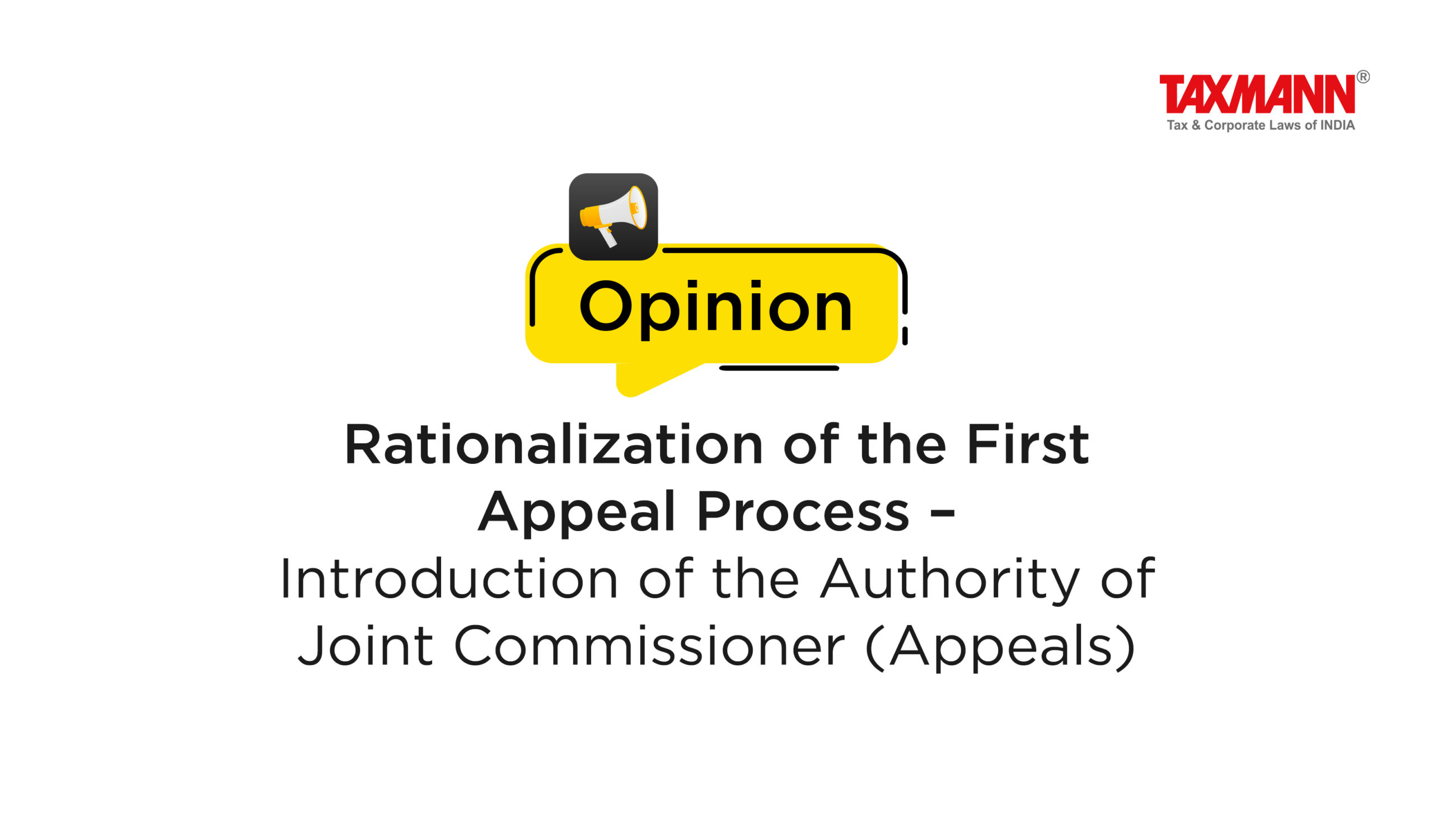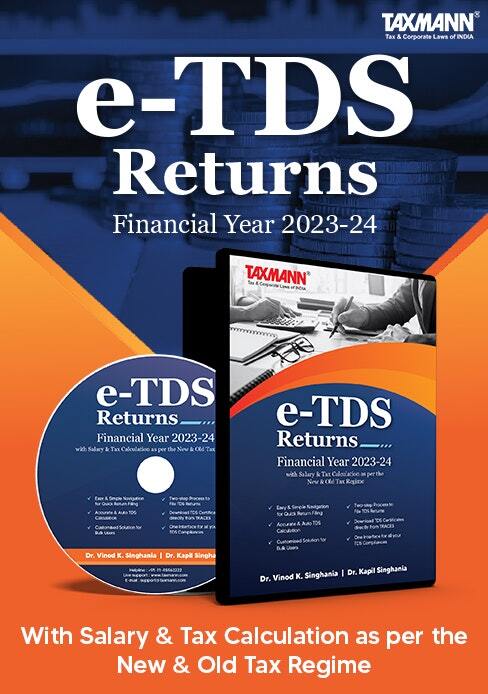[Opinion] Rationalization of the First Appeal Process – Introduction of the Authority of Joint Commissioner (Appeals)
- Blog|News|Income Tax|
- 2 Min Read
- By Taxmann
- |
- Last Updated on 23 June, 2023

CA Sudeep Das & CA Ashwath Pai – [2023] 151 taxmann.com 357 (Article)
Through the years, the Government has strived to simplify and streamline the compliance and litigation processes to improve interface with the taxpayer. One key initiative in this regard is the implementation of faceless regime and making the scrutiny assessment and appeal process faceless, which aims to eliminate direct interaction between the taxpayers and the tax authorities.
Additionally, the Government has taken steps by shortening time frame for reassessment. Furthermore, the introduction of the taxpayer’s charter has provided a comprehensive set of rights and obligations for taxpayers, ensuring fairness, accountability, and better communication between the tax authorities and taxpayers.
In line with the above-mentioned objective and to expedite disposal of long-pending appeals with the Commissioner of Income Tax Appeals [“CIT(A)”] level, the Hon’ble Finance Minister through Budget 2023 announced the creation of a new appellate authority at Joint Commissioner level to handle certain class of cases involving disputed demands of certain magnitude.
The CIT(A) is the first appellate authority under the Income-tax Act, 1961 [“ITA”], if an assessee is aggrieved by an assessing officer’s order. The CIT(A) has the power to confirm, reduce, enhance, or cancel an order of assessment after giving the assessee an opportunity of being heard.
Currently, the CIT(A) is overburdened due to the huge number of appeals and the pendency being carried forward every year. A new authority, the Joint Commissioner of Income Tax (Appeals) [“JCIT(A)”], is being established to alleviate this backlog. This new authority would have all the same authority, responsibility, and obligations as the CIT(A) regarding the process for handling appeals.
Following the budget proposal, the Central Board of Direct Tax (“CBDT”) released a notification on 29 May 2023, in which it clarified the newly established scheme (“Scheme”) scope and what assesses may anticipate with the establishment of a new authority.
With CBDT approval, the Direct General of Income Tax (Systems) would devise a process to randomly allocate or transfer the appeals between JCIT(A) and CIT(A). It has been proposed that before transfer from CIT(A) to JCIT(A) and vice-versa, the taxpayer would be given an opportunity of being heard.
Click Here To Read The Full Article
Disclaimer: The content/information published on the website is only for general information of the user and shall not be construed as legal advice. While the Taxmann has exercised reasonable efforts to ensure the veracity of information/content published, Taxmann shall be under no liability in any manner whatsoever for incorrect information, if any.

Taxmann Publications has a dedicated in-house Research & Editorial Team. This team consists of a team of Chartered Accountants, Company Secretaries, and Lawyers. This team works under the guidance and supervision of editor-in-chief Mr Rakesh Bhargava.
The Research and Editorial Team is responsible for developing reliable and accurate content for the readers. The team follows the six-sigma approach to achieve the benchmark of zero error in its publications and research platforms. The team ensures that the following publication guidelines are thoroughly followed while developing the content:
- The statutory material is obtained only from the authorized and reliable sources
- All the latest developments in the judicial and legislative fields are covered
- Prepare the analytical write-ups on current, controversial, and important issues to help the readers to understand the concept and its implications
- Every content published by Taxmann is complete, accurate and lucid
- All evidence-based statements are supported with proper reference to Section, Circular No., Notification No. or citations
- The golden rules of grammar, style and consistency are thoroughly followed
- Font and size that’s easy to read and remain consistent across all imprint and digital publications are applied




